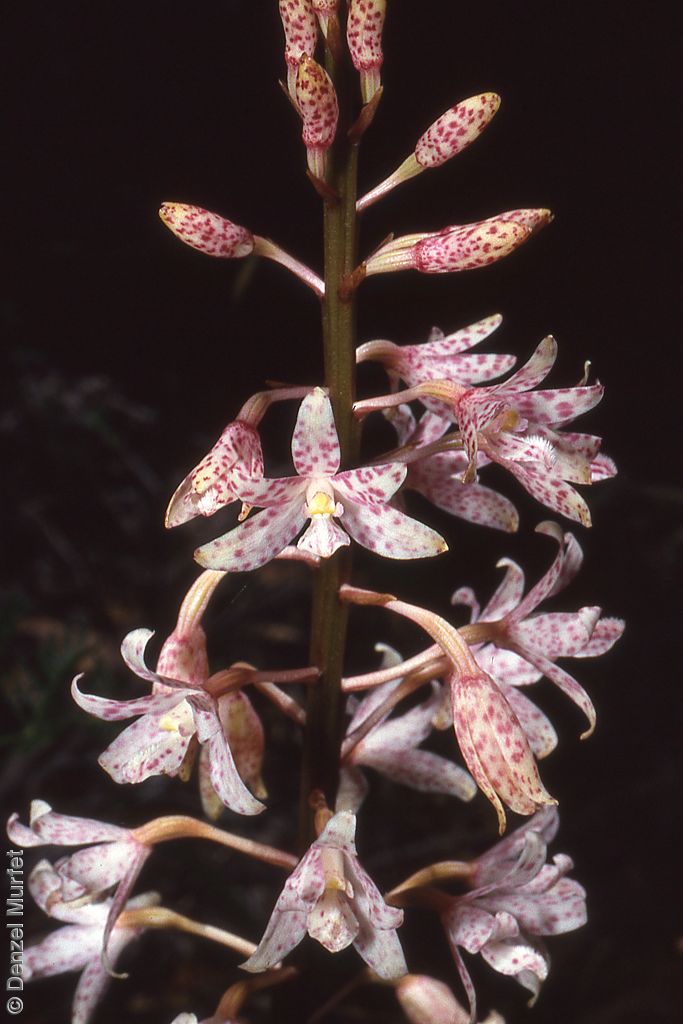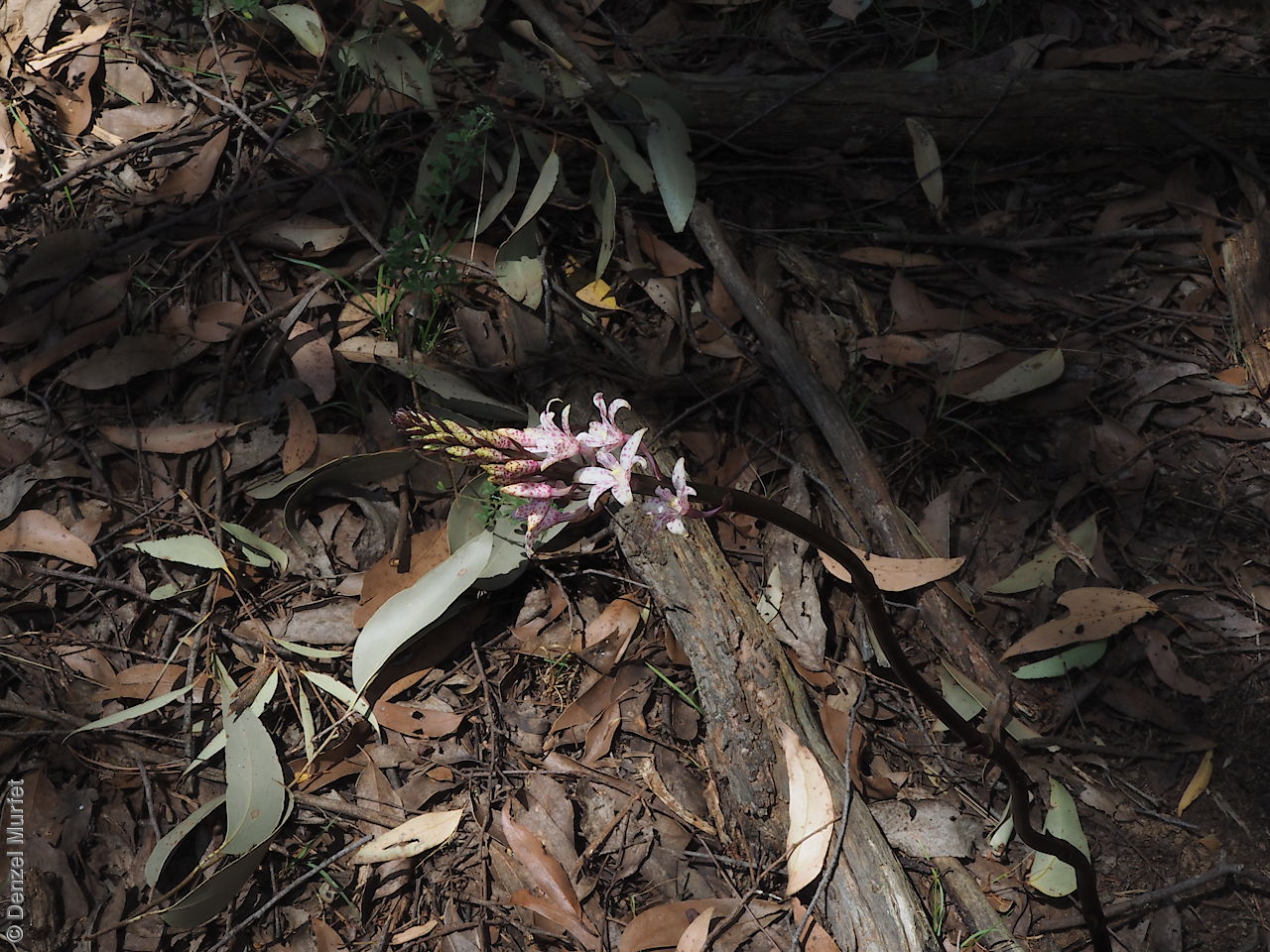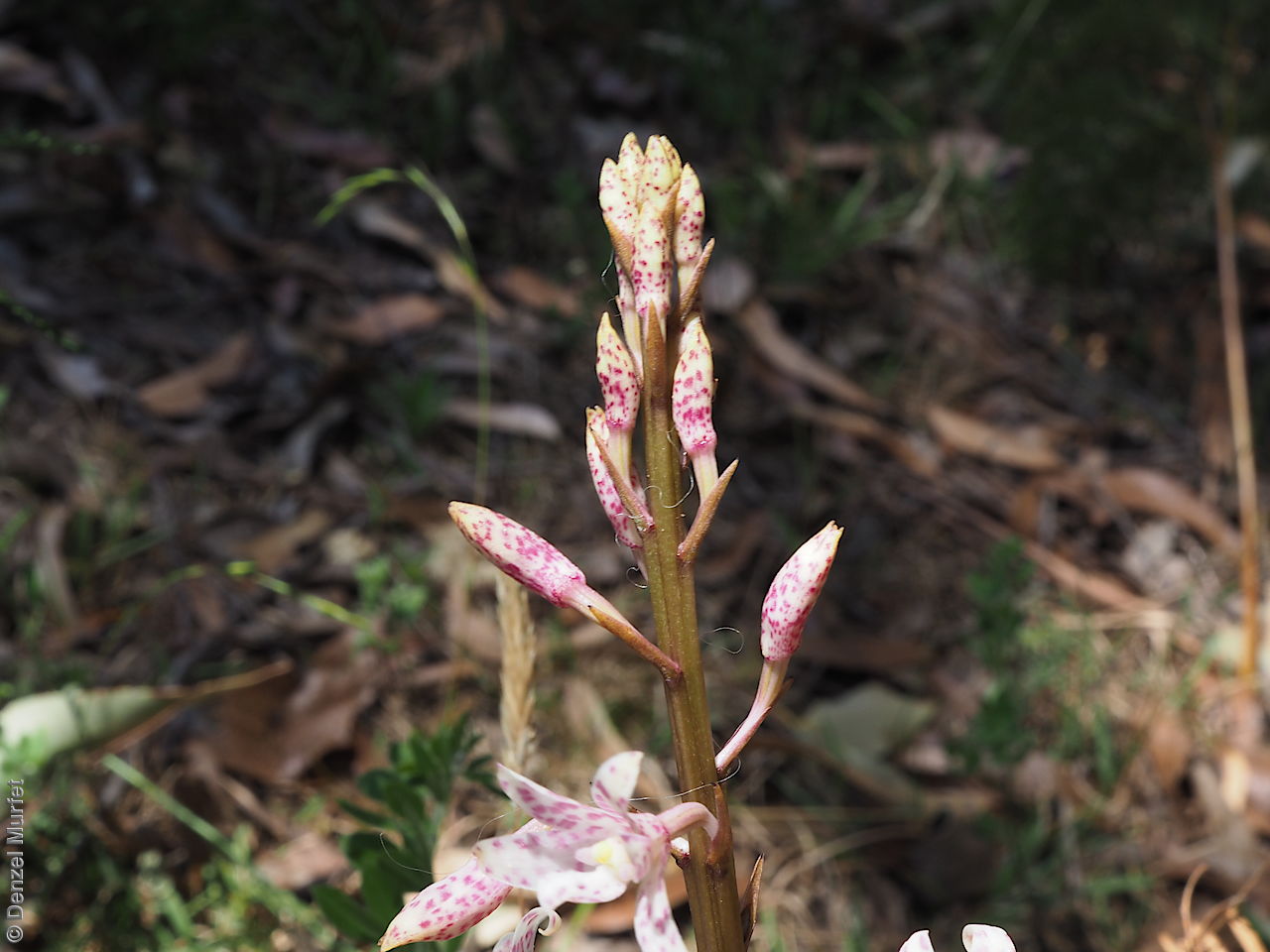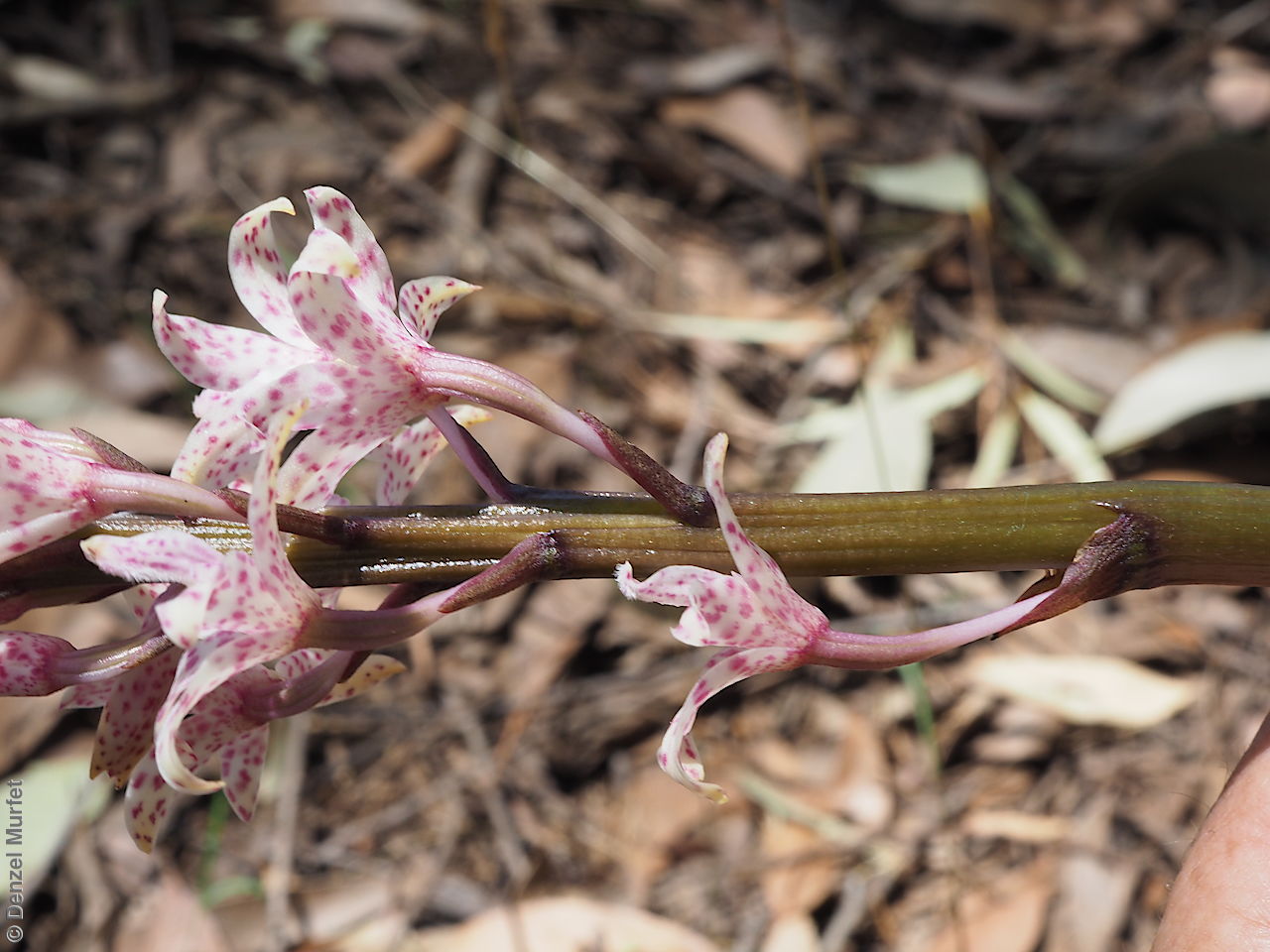












Botanical art
Common names
Spotted Hyacinth-orchid
Leopard Hyacinth-orchid
Etymology
Dipodium from the Greek 'dis' meaning twice and 'podion' meaning a small foot, referring to the two stalks of the pollen masses. Pardalinum from the Greek 'pardos' meaning leopard, alluding to the spots on the flowers.
Distribution and status
Found in the southern Mount Lofty Ranges and the South-east in South Australia, growing in stringybark woodland. Also found in Victoria. Native. Rare in South Australia. Rare in Victoria.
Herbarium regions: Southern Lofty, South Eastern, Green Adelaide
NRM region: Adelaide and Mount Lofty Ranges
AVH map: SA distribution map (external link)
Plant description
Leafless terrestrial orchid to 90 cm tall with green to purplish stems. Inflorescence much shorter than the flowering stem with 10–40, opening pale pink, quickly fading to white flowers with numerous large, dark red spots and blotches. Perianth segments strongly recurved in distal third. Sepals and petals narrowly ovate-lanceolate to narrowly elliptical, petals and lateral sepals slightly asymmetric. Labellum white with coarse red spots and blotches. Lateral lobes linear-spathulate, upcurved, clasping column, sparsely hairy on inside of base. Mid-lobe narrowly elliptical. Lamina callus of 2 linear, convergent, pubescent keels. Central band of white hairs from apex of callus to apex of mid-lobe, occupying most of surface of mid-lobe. Flowering between December and February. Fruits are brown papery ellipsoid capsule. Seeds are very small enclosed in a long narrow mesh-like casing.
Seed collection and propagation
Collect seeds between February and March. Collect plump capsules as they start to dry and turn brown. Pods will split and release the seeds quickly however and will require monitoring. To increase the chances of collecting mature pods it is recommended that a small breathable bag (ie. Organza) to be used to enclose the developing capsules. Place the capsules in a container that will hold fine seeds and leave to dry for a few weeks or until the capsule split. Then carefully hold the capsule and tap it gently to release the seeds. Store the seeds with a desiccant such as dried silica beads or dry rice in an air tight container in a cool and dry place, refrigerator or liquid nitrogen.
| Location | No. of seeds (weight grams) | Number of plants | Date collected | Collection number Collection location | Date stored | % Viability | Storage temperature |
|---|---|---|---|---|---|---|---|
| BGA | 97,100 (0.277 g) | 2 | 22-Mar-2022 | BKB58 Southern Lofty | 10-Aug-2022 | N/C | -18°C, -80°C |
Number of plants: This is the number of plants from which the seeds were collected.
Collection location: The Herbarium of South Australia's region name.
% Viability: Percentage of filled healthy seeds determined by a cut test or x-ray.